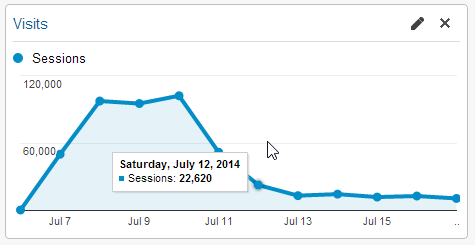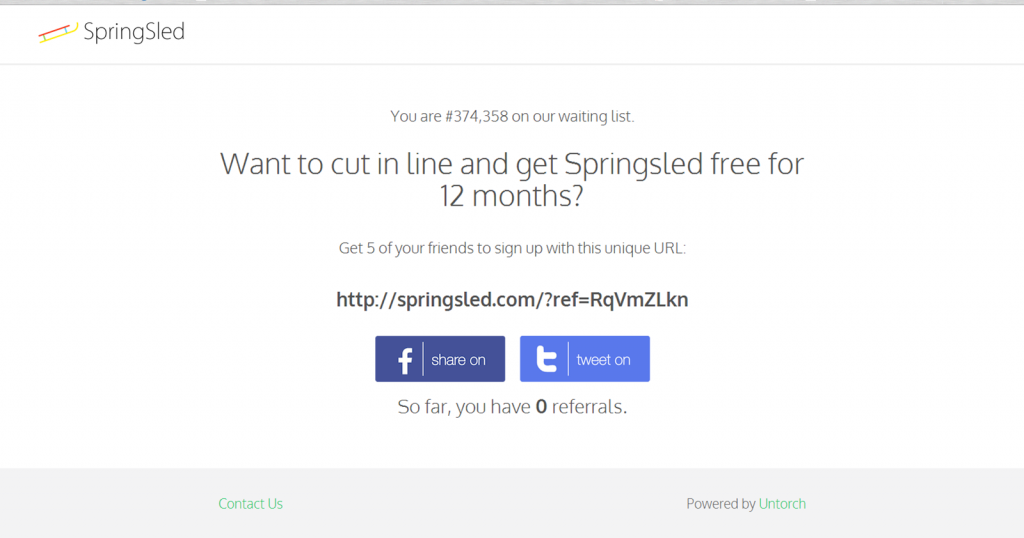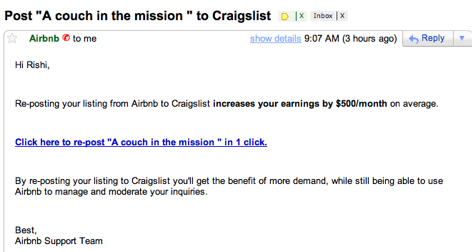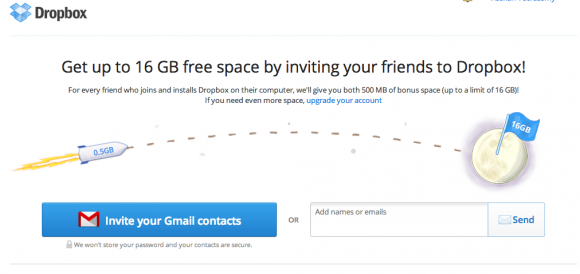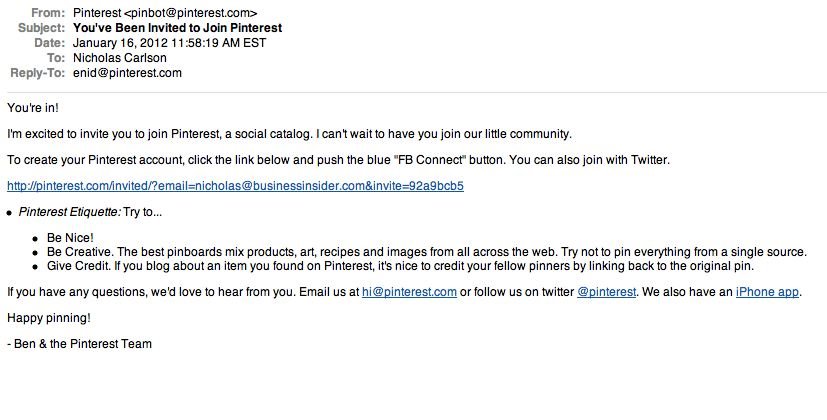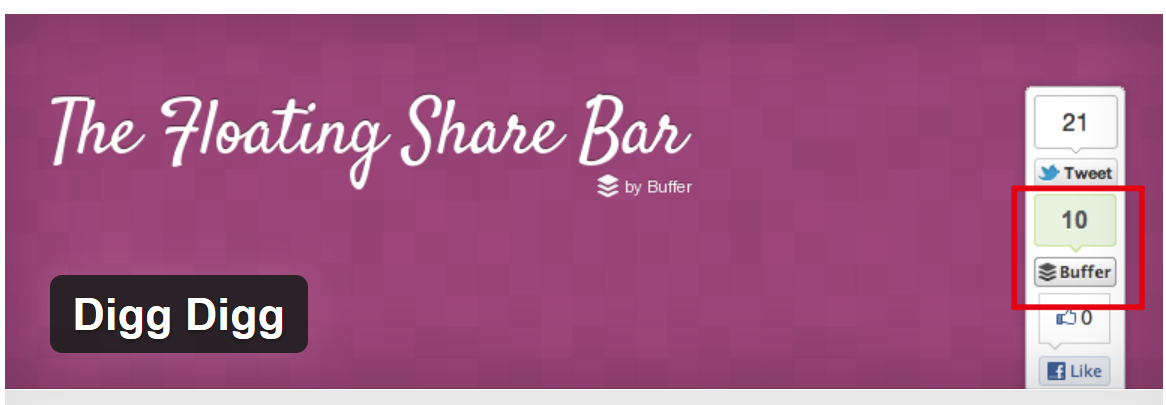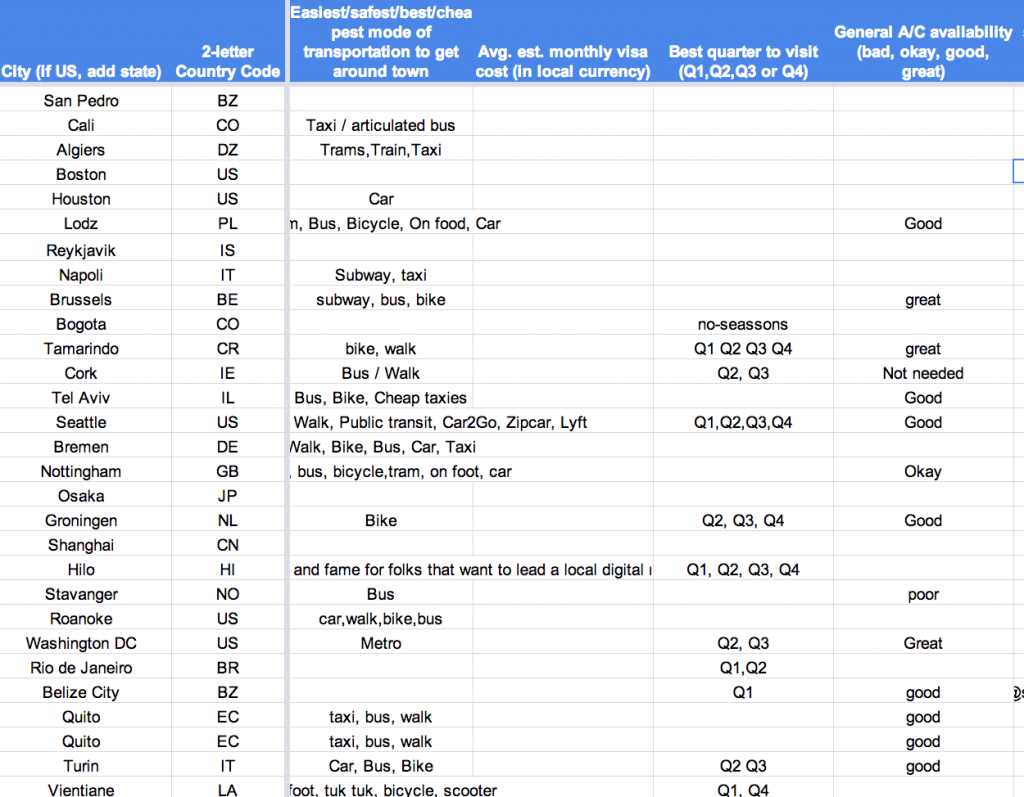How can you tell whether a marketing idea is a smart growth hack or a bad idea?
Pretty much, the only difference is hindsight.
Rather than reinvent the wheel with something that might not work, here’s a list of 35 successful experiments that companies have tried to quickly grow their online presence.
Ranging from logical strategies all the way through to downright bizarre bottom-of-the-barrel approaches, you’ll find something here that’ll get your growth hacking experiments off to a good start:
WWF Sends Animal Selfies on SnapChat
The WWF (the one that likes pandas, rather than hitting people with chairs) created a great campaign to take advantage of the blink-and-you-miss it nature of SnapChat with their animal #LastSelfies, which encouraged viewers to pay attention as this might be their last chance to see tigers and monkeys before they go extinct.
The #LastSelfie campaign injected a sense of urgency into their advertising, and it worked. The campaign was tweeted by over 40,000 Twitter users in a single week.
This campaign shows how using a platform’s limitations, rather than trying to overcome them, can create a powerful growth hack that encourages the platform’s user base to get involved.
Josh Earl’s Book Contest Goes Viral
Programmer and marketer Josh Earl wanted to run a contest to build up his email list, but figured that most ‘tweet to win’ contests are flawed because there’s no incentive to participate – letting people know about the content makes it less likely you’ll win.
So Josh used the KingSumo WordPress plugin to give entrants extra chances to win for every person they invited to sign up.
This technique worked so well that within a week, Josh had collected over 200,000 email addresses and his site had seen 100,000 visits.
Springsled Uses a Waitlist to Get Email Addresses
In a very similar case, Springsled used a waiting list for everyone signing up to their new service in advance of its release. Springsled let eager users jump ahead in the queue by inviting friends to sign up.
If your product is worthwhile and interesting, it’s sometimes worthwhile restricting access to increase demand. The greater the demand, the more people will want access to your product because they feel it must be worthwhile to generate so much interest.
And, best of all, because people hate waiting, potential users will be very willing to recommend your product to friends if it means getting closer to the front of the line.
AirBnB Integrates with Craigslist
How can you get people to try out your new service if they’ve never heard about it? Why not try the AirBnB technique and integrate directly with an existing platform?
In order to encourage use of their new service, AirBnB let people instantly cross-post on the well-established Craigslist. This helped give their brand legitimacy, as well as increasing the usefulness of AirBnB at a time when only a small number of people were using the site.
Twitter Redesigns Their User Experience
When Twitter first got started, they had a problem. The microblogging platform was drawing in a lot of new users, but many of them failed to stick around very long.
What was to be done? Twitter decided to go back to basics and redesign their user interface. They streamlined it so that new users could get the hang of Twitter quicker, making it easier for them to follow new people and share their own thoughts.
Twitter Suggests People to Follow
Twitter also took another approach to fixing their user experience and driving growth – they realized that it’s really boring to use Twitter if you don’t have anybody to talk to.
To fix this, Twitter began to suggest people that new users might like to follow. Once they had people to interact with, Twitter newbies were a lot more likely to stick around.
To make sure new visitors to your site are getting the most out of your platform, make sure that they get the key ‘aha’ moment as soon as possible and discover just what makes your service so special.
LinkedIn Makes Profiles Public
LinkedIn drove crazy growth when they decided to allow users to make their profiles public. This meant more people could see the profiles, helping to increase the popularity of the site and the depth of users’ networks.
It also gave LinkedIn a big SEO boost, as user profiles would show up in Google searches – this was a win-win for LinkedIn and its users, who wanted their profiles to be seen more.
YouTube Enables Easy Sharing
In the early days of YouTube, the company made it easy for viewers to share videos on various social media platforms, and to embed videos in webpages on other sites and social tools.
While this sounds obvious now, it was revolutionary at the time. Every video view on Facebook is just as beneficial for YouTube as a view on their own site.
YouTube Loosely Interprets DMCA Laws
Speaking of YouTube, another thing that helped the network grow so quickly was its focus on user generated content.
Of course, sometimes this content wasn’t exactly original, and many videos tended to fall on the wrong side of the Digital Millennium Copyright Act, as they featured copyrighted music or images.
However, the site’s liberal approach to copyright has meant letting users share what they want unless complaints are received – which, of course, means more videos being shared, helping YouTube to grow further.
While the lesson here isn’t that crime pays, there’s certainly something to be said for letting users get creative.
Hotmail Sends Lovenotes
The original default email signature for Hotmail read, ‘P.S. – I love you’.
Hotmail’s signature also featured a link pointing back to Hotmail, encouraging new users to sign up. The personal touch was nice, as it got email readers to pay attention, while driving substantial growth at the same time.
This just goes to show that romance isn’t entirely dead: it’s just co-owned by Microsoft.
Dropbox Offers Referral Rewards
Dropbox had a problem. Its service wasn’t quite taking off as well as it wanted – the cost of attracting a new user far outweighed the lifetime value of each customer.
Dropbox decided to run a giveaway, using the one thing they had in abundance: storage space. Inviting friends to Dropbox means getting extra free storage; something that users were thrilled to get their hands on, and something that led to a massive influx of new users for the company.
Kellogg’s Lets Customers Pay with a Tweet
In order to drum up online interest, cereal company Kellogg’s opened a pop-up shop in London selling various snacks. The only payment that was accepted was tweets – a tweet about Kellogg’s earned customers free cereal.
That said, this isn’t a unique approach by Kellogg’s. Giving away free content in exchange for tweets is quite an established growth hack.
Marketers Christian Behrendt and Leif Abraham managed to generate over 13,000 tweets about their offbeat marketing book within 72 hours of offering it through Pay With a Tweet.
PayPal Shows It’s Playing with the Big Boys
In the early days of PayPal, the company noticed that it was gaining popularity as an easy way to make payments on eBay.
PayPal reached out to eBay and negotiated to have the PayPal logo displayed alongside Visa and MasterCard as legitimate payment options. This meant that eBay users began to see PayPal as a legitimate alternative to traditional credit cards.
PayPal Gave Away Free Money
Another trick PayPal tried was offering users $10 in credit as part of a referral scheme if they got a friend to sign up. Certainly, $10 is a small price to pay for turning users into a dedicated sales team.
Store credit or money off can also work just as well for companies that sell products – it helps make both the existing user and their referral more loyal to the brand, and encourages more purchasing.
Pinterest Acts Exclusive
Some things are more appealing if they’re unattainable.
That’s the logic that Pinterest used when they made the social media platform invitation-only, but allowed all site visitors to apply for an invitation.
The sneaky thing, though, was that Pinterest then sent an invitation to every single person who requested one, and in doing so, managed to make their platform seem rare, desired and valuable through appearing to restrict access.
Pinterest Traps Users in an Endless Scrolling Loop
Once Pinterest had users on their site, they needed a way to keep them there.
The solution, which is used by many other websites as well, was to prevent visitors leaving by automatically loading the next page of content as they scrolled through.
Reaching the end of a page on the news feed means users have to decide to actively click before they can continue seeing more content. Now, many websites prefer to let users see content endlessly, keeping them on the hook for even longer.
Tinder Throws Killer Parties
Tinder is a dating site that’s all about physical location, so their early marketing efforts needed to build up their user base in small geographical areas before they could go global with any degree of success.
Their solution? Host real-life parties where the only entry requirement was downloading the Tinder app.
This meant that more people in a specific town would be using the app, making it more worthwhile to join up.
Vendio Makes Signup More Complicated
Sometimes a good growth hack flies in the face of all logic.
When ecommerce site Vendio wanted to increase their conversion rate, they decided to do some A/B testing on their site. Their original site made it easy for new users to sign up straight from the landing page.
Vendio decided to hide their signup away, and were surprised to discover that conversions went up by 60%.
Vendio’s experience conclusively proves that what is logical isn’t always what is best.
Hyundai Uses Multivariate Testing
Hyundai put multivariate testing to work on their Dutch landing page to see what combination of elements would lead to an increase in car brochure requests and website engagement.
Through trying out a lot of different small tweaks to their site, Hyundai were able to find the perfect combination to increase their conversion rate by 62%, providing further proof that regular and thorough testing is the only way to help your website be as engaging as it can be.
Webinar Jam Makes Smart Design Choices
Often, it’s the little things on a website that can make it a hit or a failure.
The Webinar Jam sales page used a lot of small but clever tricks, which together helped bring in over $3,000,000 in five months. These tricks included using a sticky bar at the top of the page, autoplaying the sales video to hook visitors in, and featuring testimonials from previous customers.
Tripl Issues Fake Parking Tickets
Nobody likes getting parking tickets.
It probably came as a big relief, then, when attendees of the 2012 YCombinator event in San Francisco discovered that the notes they found on their car windscreens after the weren’t parking tickets at all. They were actually marketing pieces for Tripl, one of the businesses who’d exhibited at the event.
These tickets quickly turned viral, making a huge marketing splash online that led to over 40,000 customers within its first year.
KISSmetrics Produces More Content
Neil Patel’s KISSmetrics grew to the point of gaining 100,000 monthly website hits in a year and ten months – over twice as fast as his earlier project, Quick Sprout.
According to Neil, his success comes from the sheer volume of content that KISSmetrics produced (five pieces per week with KISSmetrics, compared with only two a week on Quick Sprout).
What’s more, when KISSmetrics increased to six pieces of content a week, the site gained over 80,000 additional monthly visits.
Facebook Emails Its Users
If you’re struggling with engagement rates from existing site members, why not email them, asking them to visit your site? It works for Facebook.
By default, Facebook will email users about their latest notifications. It’s a clever way to keep users coming back for more – especially when new users are still forming their habits with your site.
Foundr Generates a Lot of Content
In order to build a strong reader base, the online magazine Foundr used Instagram to post inspirational quotes against pretty backgrounds several times a day.
This kind of content fits perfectly with what Instagram users like to see, which is why it’s no surprise that Foundr gained over 300,000 followers in just ten months.
Discover Cymru Invites Content Submissions
The Discover Cymru Instagram account was designed to draw in followers looking for scenes of the Welsh countryside (‘Cymru’ is the Welsh word for Wales). Discover Cymru posted some initial pictures before asking followers for submissions.
Thanks to user generated content, Discover Cymru was able to gain over 1,000 followers in just 14 days – site visitors loved the chance to contribute their own photos.
Candy Crush Trades Referrals for Lives
Probably every single Facebook user has seen a notification for Candy Crush, whether or not they’ve ever played the game.
That’s because, in designing Candy Crush, Zynga gave players the chance to earn more lives by asking friends to donate them.
This has been a big part of Candy Crush’s viral success, as it’s both inspired many new players and encouraged lapsed players to return (though it’s worth noting that it’s also annoyed the heck out of non-players).
KontrolFreek Sponsors YouTube Celebrities
Sometimes, the easiest way to hack your growth is to piggyback on the success of someone else.
That’s what gaming hardware company KontrolFreek did when they signed big name YouTube gamers as brand ambassadors.
Using such niche stars meant KontrolFreek could reach out directly to their target demographic. These sponsorships worked, as KontrolFreek managed to grow their sales by 50% following some clever YouTube videos.
Eventbrite Uses Facebook Data to Focus Emails
Eventbrite’s Director of Data Engineering boasts that the service’s users click on at least one link for every two Eventbrite emails they open.
This very high level of email engagement, the service claims, is because emails are deliberately tailored to specific users based on information obtained from Facebook data.
Research conducted by Facebook lets Eventbrite know which events will appeal to which users, which helps them to make their emails as relevant as possible and has led to around 50 million ticket sales.
Buffer Includes Its Platform as Standard for a Popular WordPress Plugin
In order to build the popularity of social media service Buffer, the company decided to purchase a popular WordPress plugin named Digg Digg which helped users share content.
Buffer then made one significant change to the Digg Digg – they included the ability to share through their platform alongside Facebook and Twitter.
This meant that Buffer looked more legitimate to the 300,000 users of Digg Digg and all of the visitors to sites which used the plugin, leading to quick growth and visibility.
Groupon Makes Sharing Easy
Why not use peer pressure to hack your growth? Everyone else is doing it!
Take Groupon for example, which built its platform around sharing. Whether it’s showing new deals to friends, or deals that are only available if a certain number of people sign up for them, Groupon made everything about sharing.
It worked out pretty well for them – Groupon managed to grow 228% in a single year.
Mailbox Teases Potential Users with an Email Waitlist
Absence, it’s often said, makes the heart grow fonder.
Perhaps that’s part of the reason why at launch, Mailbox worked on a wait list system, where users slowly gained access to the app.
Being temporarily denied access to Mailbox made many potential users all the more eager to gain access to it, making them value the app all the more when it was finally offered to them.
Instagram Profiles are Public by Default
Let’s face it – privacy is dead.
Instagram certainly thinks so, which is why it initially made all new profiles public by default while the platform was still young.
This meant that anybody could see your pictures, leading to many new relationships being forged between strangers.
As its network grew, Instagram gained popularity, in large part because public profiles meant that the site was making optimum use of its relatively small user base. Considering that Instagram is now bigger than Twitter, this strategy clearly worked.
Mint Makes Smart Use of A/B Testing for Email Requests
In order to find the best way to get people to sign up with their email addresses for Mint.com, the company invested heavily in A/B testing their email collection form.
Sometimes, a single word out of place can make all the difference, which is why testing all aspects of a site for effectiveness is crucial to achieving maximum growth.
Nomad List Asks for Audience Participation
Before city lifestyle site Nomad List launched, in order to gain data, the designer asked online for help in collecting information about cities around the world.
Many people around the world jumped at the chance to fill in a Google doc with basic information about their city.
The Google doc drew so much attention that Nomad List ended up going viral to a huge audience, with the website gaining over 70,000 page views on its first full day after launch.
Product Hunt Limits Opportunities to Share
Effective content marketing isn’t just about producing a high quantity of content – it’s also about making sure that the content is of a high quality.
That’s why Product Hunt only allows around 2% of its users to post products – the service is designed around drawing attention to useful new products, and if it was flooded with too much content of dubious quality, the site would be significantly less useful.
It seems strange to limit user participation, but doing so has paid off big time for this growing company.
Experimentation is Key
If an idea for growing your website’s reach sounds stupid, but it works well, then it’s not a stupid idea.
No matter how weird a suggestion may sound, there’s no way of telling whether it’ll work for your brand or not until it’s been tried.
What’s the weirdest growth hacking idea you’ve ever come across? Feel free to share your thoughts in the comments below:
Images: Flickr, Flickr, JustforThis, SmartPassiveIncome, Prefundia, AmazonAWS, Twitter, Youtube, ReferralCandy, Digital Innovation Today, Ebay, ReferralCandy, Business Insider, VWO, TribeBoost, ContentMarketingInstitute, QuickSprout, Medium, GrowthGiant, WordPress, Levels.io





